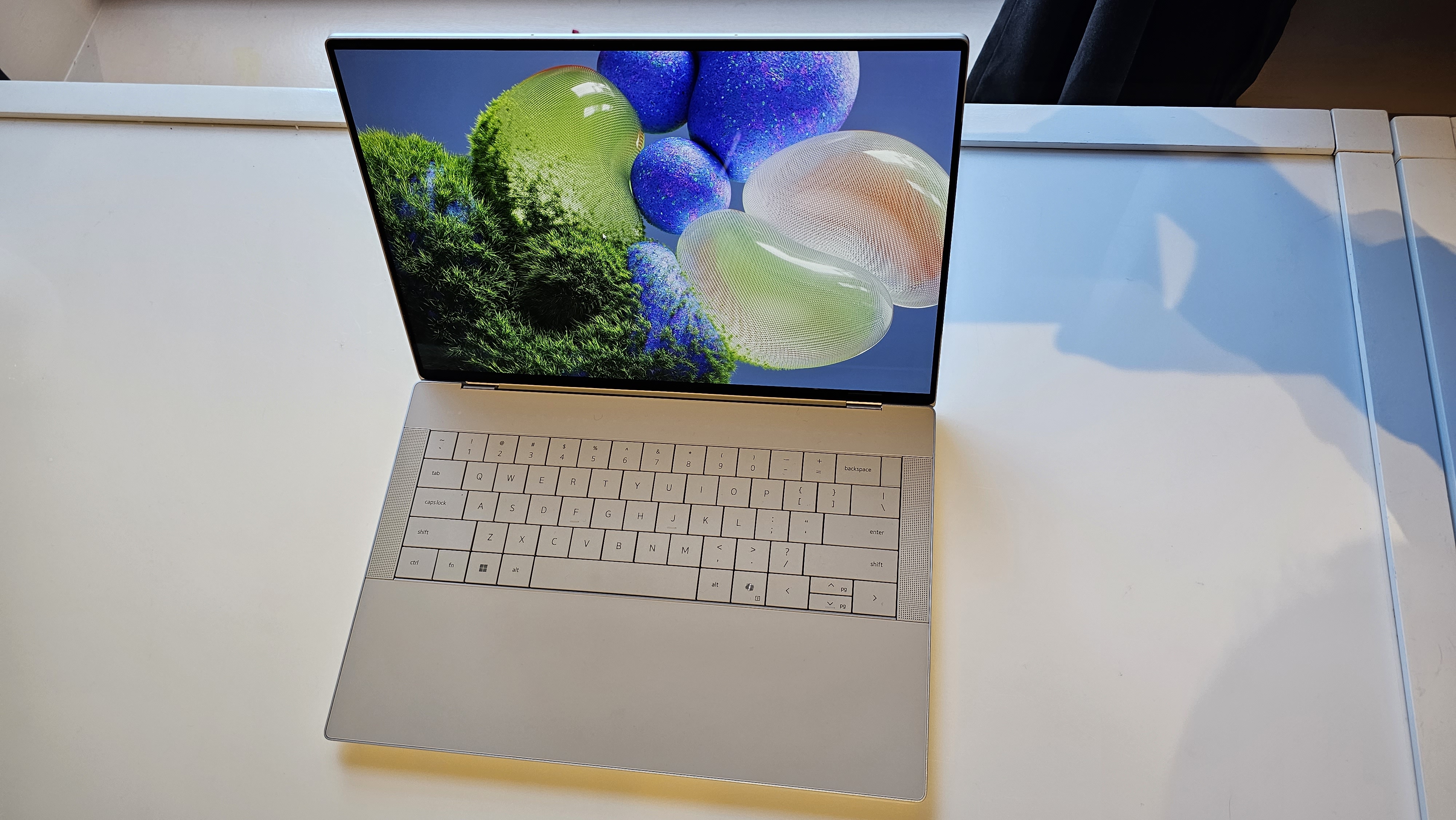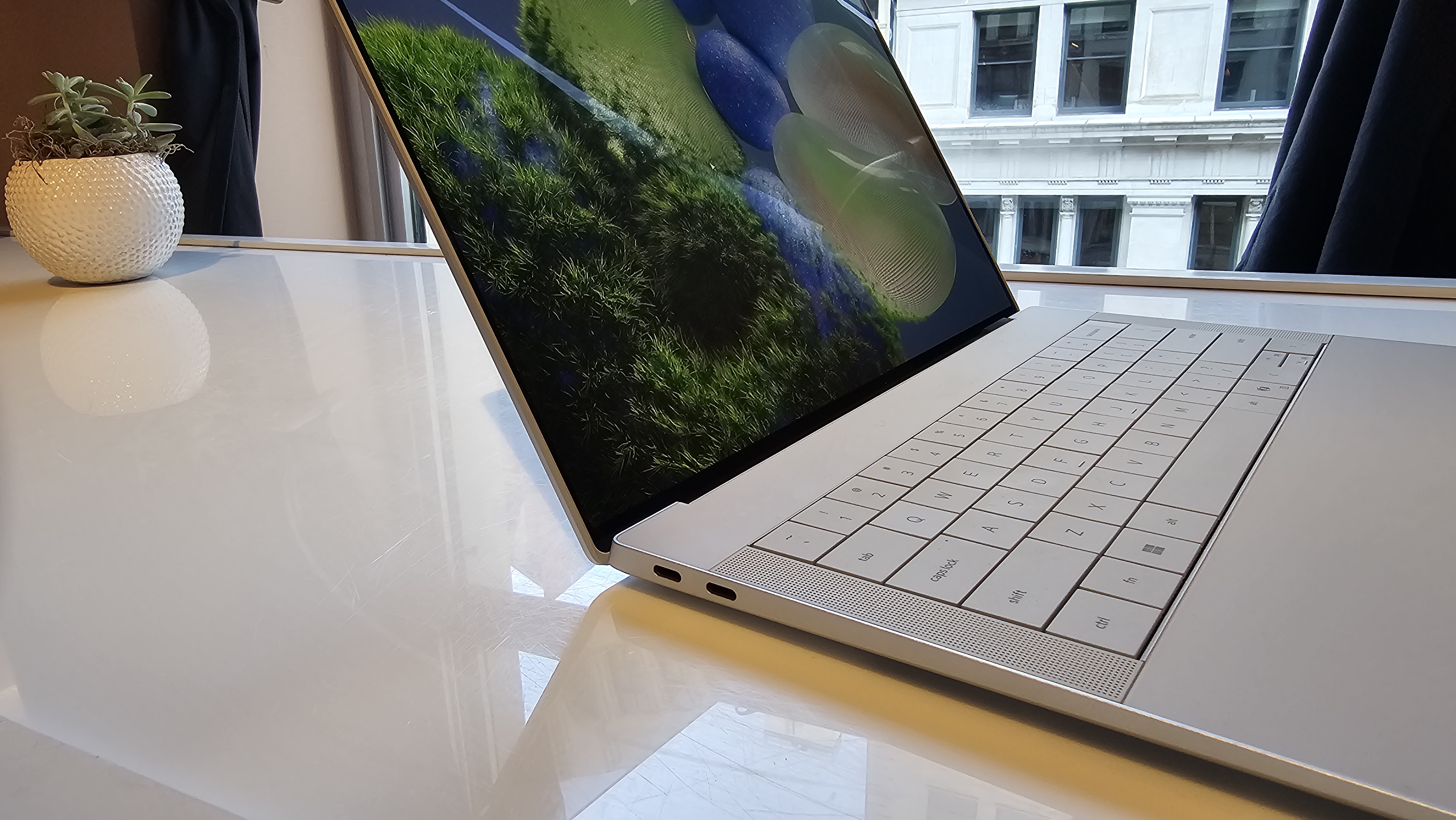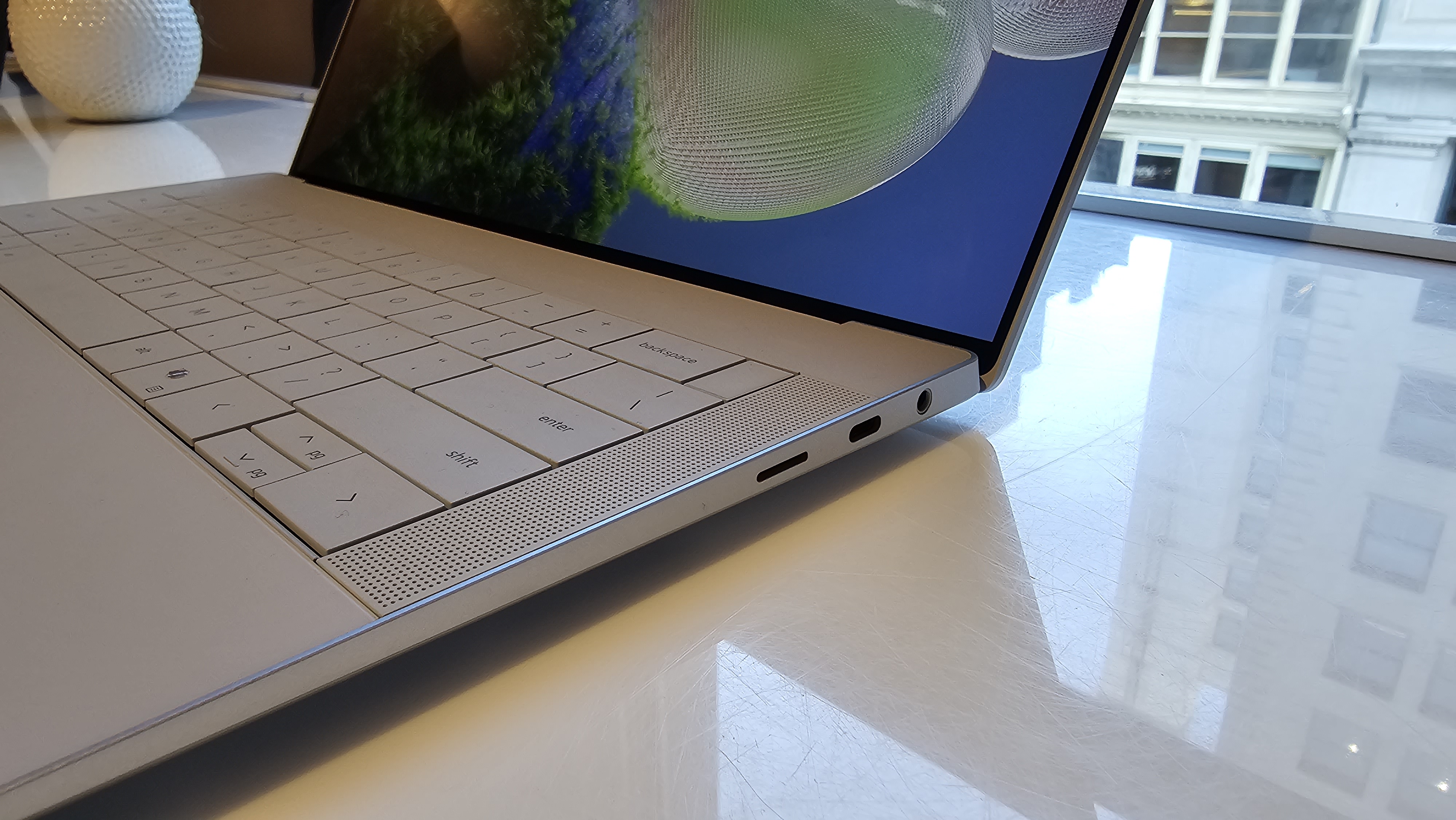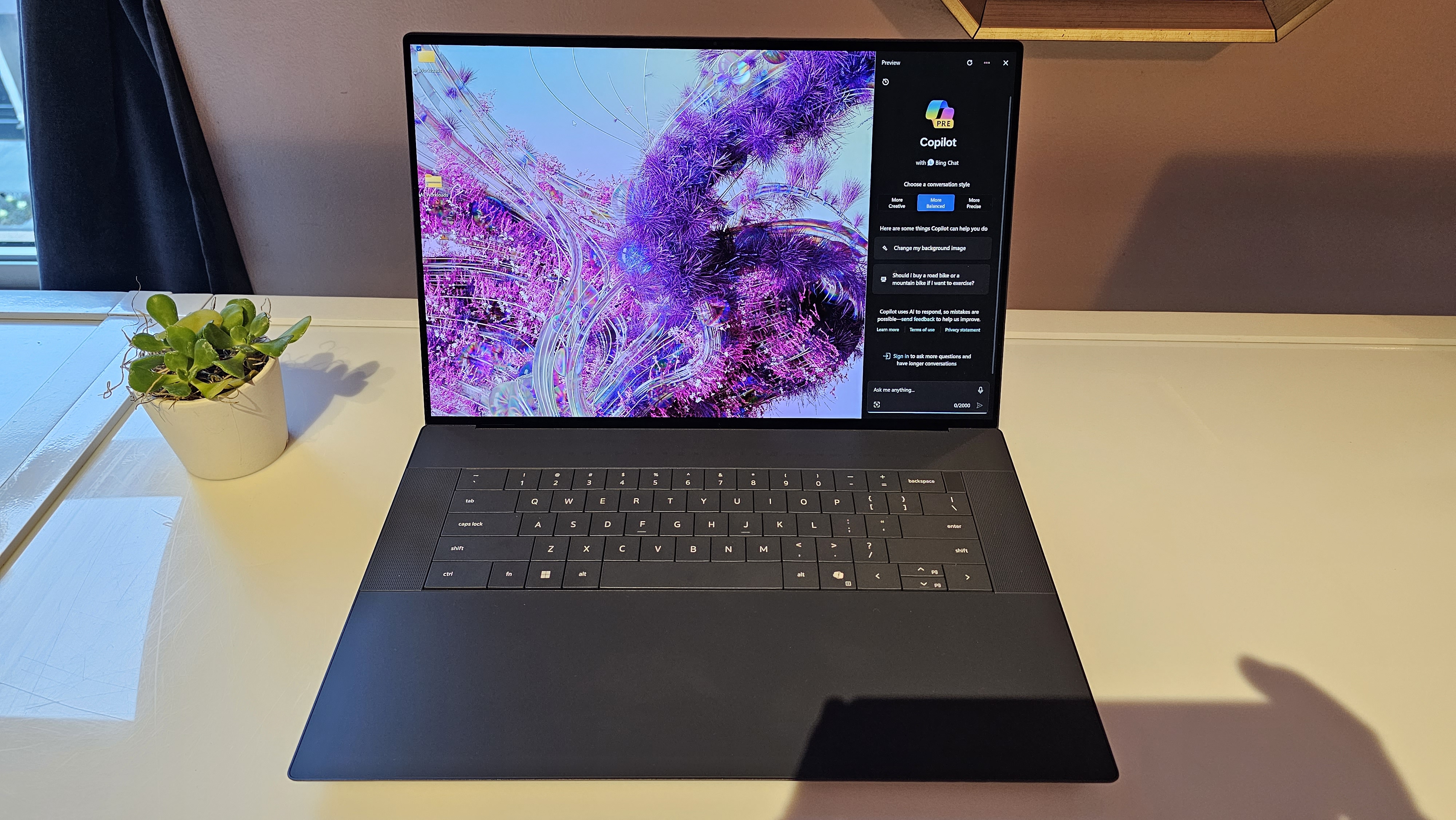Dell XPS 13, 14, and 16 get Intel Core Ultra, lose function rows and physical touchpads
The former Plus look is the mainstay across the XPS 13 and two new sizes. Oh, and there's a Copilot key.

Dell is completely revamping its flagship XPS laptop line, including a new XPS 13, as well as two new sizes: the XPS 14 and XPS 16. They're coming with the latest Intel Core Ultra processors, and the larger two options will also support discrete Nvidia graphics.
But here's the rub: The entire lineup is taking the critically mixed design of the XPS 13 Plus, which means no function keys — just a "capacitive touch function row," and a haptic touchpad with no defined borders. In fact, the XPS 13 Plus is gone. This lineup is all just regular XPS, taking over that design.
The new XPS 14 and XPS 16 effectively replace the XPS 15 and XPS 17, following a pattern we've seen among many productivity laptops at 16:10 screens have become more popular. The XPS 15, however, will stick around for a bit in its old chassis without any updates, as Dell tells me it's one of the most popular models.
| Header Cell - Column 0 | Dell XPS 13 (9340) | Dell XPS 14 (9440) | Dell XPS 16 (9640) |
|---|---|---|---|
| Processor | Up to Intel Core Ultra 7 165H | Up to Intel Core Ultra 7 165H | Up to Intel Core ultra 9 185H |
| Graphics | Intel Arc (integrated) | Intel Arc (integrated) Nvidia GeForce RTX 4050 Laptop GPU (6GB, 30W) | Intel Arc (integrated) Up to Nvidia GeForce RTX 4080 Laptop GPU (8GB, 60W) |
| Memory | Up to 64GB LPDDR5x-7467 | Up to 64GB LPDDR5x-7467 with RTX 4050, LPDDR5x-6400 with Arc | Up to 64GB LPDDR5x-7467 with RTX 4070, LPDDR5x-6400 with Arc, RTX 4050 or 4060 |
| Storage | Up to 2TB PCIe Gen 4 SSD (4TB coming later) | Up to 4TB PCIe Gen 4 SSD | Up to 4TB PCIe Gen 4 SSD |
| Display | 13.4-inch, 1920 x 1200, 120 Hz, Dolby Vision 13.4-inch, 2560 x 1600, touchscreen, 120 Hz, Dolby Vision 13.4-inch 2880 x 1800, OLED touchscreen, 60 Hz, Dolby Vision | 14.5-inch, 1920 x 1200, InfinityEdge, 120 Hz, Dolby Vision14.5-inch, 3200 x 2000 OLED, touchscreen, 120 Hz, Dolby Vision | 16.3-inch, 1920 x 1200, 120 Hz, Dolby Vision 16.3-inch, 3840 x 2400, OLED, touch screen, 90 Hz |
| Battery | 55 WHr | 69.5 WHr | 99.5 WHr |
| Networking | Intel Killer Wi-Fi 7 1750 (BE200) 2x2, Bluetooth 5.4 | Intel Killer Wi-Fi 6E 1672 (AX211) 2x2, Bluetooth 5.3 | Intel Killer Wi-Fi 7 1750 (BE200) 2x2, Bluetooth 5.4 |
| Webcam | 1080p | 1080p | 1080p |
| Starting Price | $1,299.99 | $1,699.99 | $1,899.99 |
| Release Date | Q1 2024 | Q1 2024 | Q1 2024 |
The new XPS 13 will start at a Core Ultra 5 125H and run up to the Ultra 7 165H, while the XPS 14 will eschew the Ultra 5 for just one of two Ultra 7 chips. The XPS 16 will start with Core Ultra 7 and run up to the Core Ultra 9 185H.
For graphics, the XPS 13 will be sticking with Intel's integrated Arc solution, while the XPS 14 will offer Arc or Nvidia RTX 4050. The bigger XPS 16 will have options ranging from an RTX 4050 to an RTX 4070. RAM speeds appear to be tied to the graphics option. The RAM on all three sizes is soldered down, which Dell partly justifies with a top speed of 7647 MT/s. But on the XPS 14 and 16, you only get that with the top-end GPU, which presumably means some of the most expensive configurations.
The XPS 14 and 16 will have a better port situation than the 13-inch model. While the XPS 13 is limited to just two Thunderbolt 4 ports, the bigger models are more varied. Those each come with three Thunderbolt 4 ports, a microSD card reader, and a 3.5 mm headphone jack – only people who like larger screens need wired headphones, apparently. Some of the notebooks, the XPS 13 and 16, are slated to get Wi-Fi 7 support.



While the XPS 13 design hasn't changed much, there is one noticeable difference when you look at the keyboard: a key dedicated to Windows Copilot (this replaces the right control key on the previous XPS 13 Plus). This same key has made its way to both the XPS 14 and 16, as well. We haven't seen a dedicated Copilot key on any other Windows 11 laptops yet, but it's striking to see a hardware company dedicate a key to the feature, putting it on par with the Start menu. That's a pretty big bet.
On the XPS 16, you get the same keyboard as on the 13, flanked by speakers on the sides. On the XPS 14, the non-letter keys are all just slightly smaller to fit the top-firing speakers.
I'm a bit skeptical of the new machines. While I ultimately got used to the touchpad on the XPS 13 Plus, I wish Dell would have at least drawn some borders around it, which would do wonders for accessibility. But the function row is still, frankly, a weird choice, especially as you get into larger laptops with more ports that are ostensibly for professionals. Those professional and creative users need buttons. The capacitive function row still requires looking down at your keyboard, and occasionally pressing the Fn button to switch between pre-programmed purposes.
Dell's marketing materials suggest that bringing the XPS 13 Plus design to the full lineup means making thin, light devices. The XPS 14 is 0.71 inches thick and starts at 3.7 pounds, while the XPS 16 is 0.74 inches thick and starts at 4.7 pounds (and that's with integrated graphics).
Get Tom's Hardware's best news and in-depth reviews, straight to your inbox.
That's not to say there are no benefits. The CNC aluminum build feels solid, and I do appreciate the significant RAM and storage options (up to 4TB SSD and up to 64GB of RAM). And Dell's InfinityEdge displays, while not unrivaled, are still often among the most eye-popping in the industry — those thin bezels can still wow.
That being said, we hope to spend real time with these machines to see how the design has evolved throughout the XPS lineup when they launch early this year.
All three laptops are set to launch in "Q1 2024," with the XPS 13 starting at $1,299.99 (I hope to see a $999.99 version eventually), the XPS 14 beginning at $1,699.99, and the XPS 16 beginning at a pricey $1,899.99.

Andrew E. Freedman is a senior editor at Tom's Hardware focusing on laptops, desktops and gaming. He also keeps up with the latest news. A lover of all things gaming and tech, his previous work has shown up in Tom's Guide, Laptop Mag, Kotaku, PCMag and Complex, among others. Follow him on Threads @FreedmanAE and BlueSky @andrewfreedman.net. You can send him tips on Signal: andrewfreedman.01
-
DSzymborski The lack of a physical touchpad would be a dealbreaker for me, just as haptic controls with no feedback are in cars for me.Reply -
-Fran- Interesting design for sure... As long as there's a way to actually access/use the F-keys, then it shouldn't be a problem since you mostly never use them. What I find strange is the touchpad decision and I just wonder how weird/awkward is going to be getting used to it.Reply
In any case, they look interesting (being fair to Dell), but not having a keypad is a no-go for me, personally.
Regards. -
Notton How would you enter Dell's BIOS without F2/F12 keys?Reply
Not that I think you would need to, unless these use LPDDR CAMM modules. Secure boot requires a reset in BIOS after upgrading RAM. -
das_stig Soldered memory, copying Apple again, no thanks, I prefer to upgrade when convenient and cheaper for me not for the manufacturers overinflated prices.Reply -
jp7189 I already have trouble r-clicking on my buttonless TouchPad. Drag to select is also much less accurate without buttons. This seems to be a further step in the wrong direction.Reply -
Findecanor Most touch input devices are somewhat finicky already, with palm rejection sometimes working and sometimes not. Does Dell think that they have solved it now, that their touchpad is significantly better than anything that has come before?Reply
The Cortana Copilot key is apparently mandated by Microsoft now. We are unfortunately going to see it a lot more.
This key has a tiny sublegend that does remind me of the old Menu key though, so perhaps it can be remapped in BIOS. (hopefully)
MS had already introduced an Office key and an Emoji key in 2019, but I don't think they had been seen on any but Microsoft's two keyboards released then that had it. (Maybe because binging googling for "Office key" will more often often lead to how to install Microsoft Office without paying for it) -
snemarch Replyno function keys — just a "capacitive touch function row," and a haptic touchpad with no defined borders.
That's a massive no-go. Even Apple had to revert their stupid touchbar decision and bring physical function keys back. No borders for the haptic touchpad might work, but I'd still prefer a slight indentation; it makes it ever so slightly easier to locate the area without taking your eyes off the screen.
And a Copilot key? Ugh. At least the Windows and Context-menu keys were useful. Hopefilly that one can be low-level remapped... -
magbarn Reply
They copied the worst of Apple's "ideas" including the loss of the function row keys.das_stig said:Soldered memory, copying Apple again, no thanks, I prefer to upgrade when convenient and cheaper for me not for the manufacturers overinflated prices. -
frogr you have a typo in the table for Dell XPS 14 display resolution:Reply
3200 x 200,
should be x 2000 -
BillyBuerger I don't get Dell's obsession with "touch buttons". Touch "screens" are useful because you are physically looking at what you are touching. But touch buttons are TERRIBLE! You generally shouldn't have to look at your keyboard to use it. Without any tactile feeling of where the button is, you have to physically look to see that where you are touching is in fact the button you want to push. And it's very easy to be off a little bit and accidentally hit the wrong button. I had one of the early XPS 13 laptops back in the day and it had a couple of touch buttons for volume at least. And I could never use that consistently. They also used these kinds of things on their monitors for a while which they thankfully got rid of. Did I push the power button or did I miss? It didn't turn on yet so I must have missed. But now they're doubling down hard by making a whole row of keys like this.Reply
We usually go with Thinkpads for our office laptops these days and I'm still pretty happy with those. But some of the fancy corporate folks like the Dell XPS. We've been sticking with the non-Plus XPS as those at least have a mostly normal keyboard. I can't see getting these new ones with these bad designs choices.
